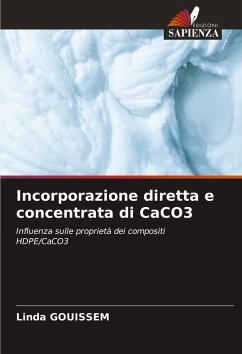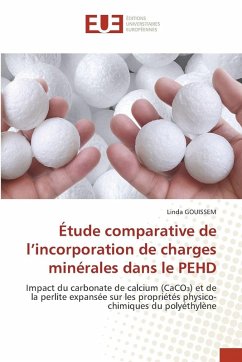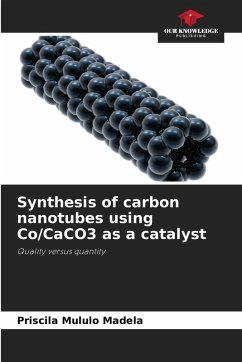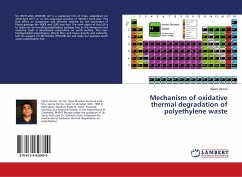
Direct and concentrated incorporation of CaCO3
Influence on the properties of HDPE/CaCO3 composites
Versandkostenfrei!
Versandfertig in 6-10 Tagen
29,99 €
inkl. MwSt.

PAYBACK Punkte
15 °P sammeln!
This work investigates high-density polyethylene (HDPE) composites reinforced with calcium carbonate (CaCO ), highlighting the importance of Masterbatches for efficient dispersion of CaCO in the polymer matrix. The preparation of the Masterbatches resulted in a homogeneous mixture, optimizing processing conditions and stabilizing the mechanical and thermal properties of the composite, even with high filler ratios.The addition of CaCO up to 20% via a concentrate improved the flowability index, facilitating composite processing, while maintaining a stable Vicat temperature, a sign of uncompromis...
This work investigates high-density polyethylene (HDPE) composites reinforced with calcium carbonate (CaCO ), highlighting the importance of Masterbatches for efficient dispersion of CaCO in the polymer matrix. The preparation of the Masterbatches resulted in a homogeneous mixture, optimizing processing conditions and stabilizing the mechanical and thermal properties of the composite, even with high filler ratios.The addition of CaCO up to 20% via a concentrate improved the flowability index, facilitating composite processing, while maintaining a stable Vicat temperature, a sign of uncompromised thermal resistance. Infrared analyses confirmed a homogeneous dispersion of CaCO in the polymer matrix.Mechanically, composites with up to 15% CaCO via concentrate retained satisfactory properties while improving processability. However, at 20%, a reduction in ductility is observed, although stiffness and mechanical strength remain preserved. This indicates that the composite becomes less deformable before fracture at high loading rates.












